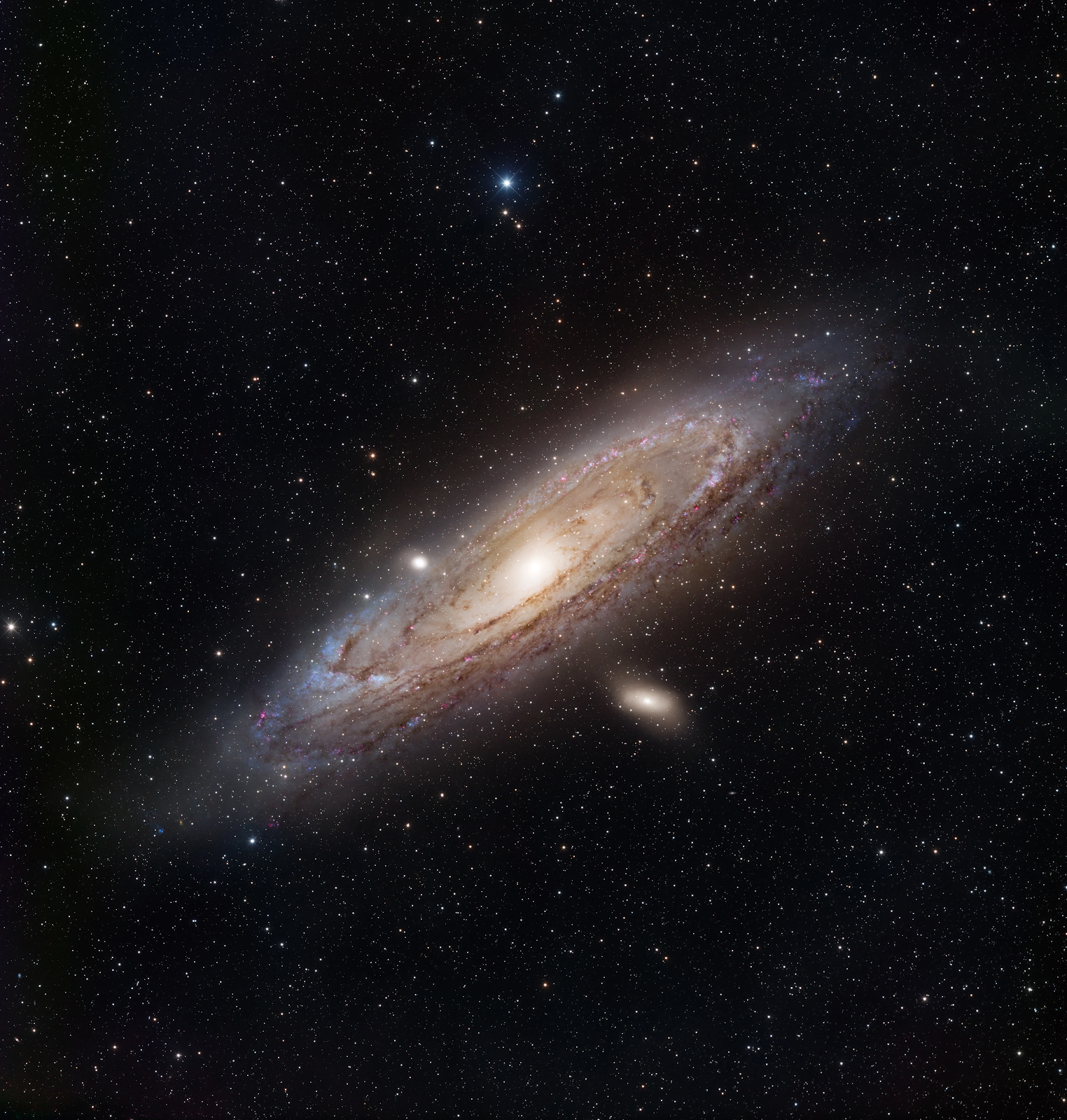A Not-So-Amateur Discovery!
When we think of new astronomical discoveries, we think of enormous space telescopes like JWST or dedicated observatories like ALMA (Atacama Large Millimetre Array). However, a group of amateur astronomers and astrophotographers discovered a structure near the Andromeda Galaxy that had never been seen before. Marcel Drechsler, Xavier Strottner, and Yann Sainty found a vast cloud of gas near Andromeda entirely composed of oxygen.
The group was imaging Andromeda using narrowband filters. Narrowband filters are special filters that allow only a very sharp region of light from the sky into the imaging device, thus filtering out all other unwanted light. The different filters are characterized by the specific emission lines it permits. The emission lines differ in what element you are trying to image; for example, an H-α filter only allows the light of 656.46 nm to pass through, allowing you to filter out light produced by ionized hydrogen. The expansive red haze visible around andromeda in the above image is the hydrogen gas present around the galaxy imaged using an H-α filter.
Different types of narrowband filters
A particular filter that astrophotographers use to image nebulas is the O-III filter. This filter passes through the light of roughly 500nm, which is emitted by doubly ionized oxygen. When the group tried to capture nebulas present in the Andromeda galaxy, they noticed a massive patch near the galaxy emitting the same O-III light. However, this light was immensely faint, and they had to acquire a staggering 160 hours' worth of exposure data to capture the structure entirely. (To put this into context, a standard photo your phone takes of the night sky is a couple of seconds at best)
But why this structure has completely eluded astronomers and astrophotographers for all this time is puzzling. Andromeda is a popular object to photograph and observe by professionals and amateurs. We have been making observations of Andromeda for almost 1200 years, yet this object has been hiding in plain sight!
Andromeda galaxy photographed in visible light under normal settings
To ensure that the group wasn't seeing reflected light or other false alarms, they teamed up with other astronomers to confirm that the object existed. After five independent observations from telescopes around the world, it was confirmed and consequently named Strottner-Drechsler-Sainty Object 1, or SDSO-1.
One of the reasons why SDSO-1 had not been found before could be that it is incredibly faint. Observatories rarely invest massive amounts of time into a single target and could miss out on faint objects like these. Another reason could be that SDSO-1 covers a wide field of view. In contrast, most observatories cover a narrow field of view and cannot see it entirely despite better data-gathering capabilities. The main reason why Sainty claims astrophotographers had not yet discovered it was that most photographs of Andromeda use H-α filters. Even if they did use O-III filters, the exposure times would not have been enough to reveal SDSO-1.
What SDSO-1 actually is, also remains an open question. A possible theory is that it could be part of Planetary Nebulae in our galaxy or Andromeda. They are leftover materials from aging stars that form large, vibrant structures of dust and gas. Still, the absence of stars in the nearby area that could heat the gas enough to emit this light puts a pin in that idea. The theory that it could be part of Supernova remains also could not be corroborated by the lack of Radio and UV emissions. Another theory is that it came about due to the presence of Stellar streams near Andromeda. Stellar streams are what remains of smaller galaxies as they get too close to larger galaxies and end up getting shredded due to the latter's immense gravity. However, this theory also requires the cloud to have some H-α emissions, and as seen in the image, it is entirely devoid of any hydrogen gas. Detailed studies of the light from SDSO-1 could give us more clues to the puzzle; for example, a spectroscopic analysis (the process of splitting light into its components) could reveal the velocity of the cloud, telling us where it is coming from and how it is moving.
Cats Eye Nebula, an example of planetary nebulae
Modern astrophotography devices have enabled astronomers to capture a wide variety of more detailed images of deep-sky objects. These astronomers and astrophotographers who spend days capturing and processing images from the far corners of space or the vast neighborhood, in our case, end up seeing spectacular sights that were not accessible to everyday people before. With the discovery of new objects like these, there has been a spark to reconsider the term - "Amateur Astronomers" for "Independent Astronomers", which rightfully credits the professional standard these astronomers work with.
-Aswin R(MS20028)





Comments
Post a Comment